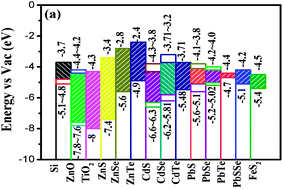Recent progress in organic–inorganic hybrid solar cells
Abstract
Organic–inorganic hybrid solar cells were expected to adopt the advantages of both organic and inorganic materials. Due to several crucial problems, the power conversion efficiency of most hybrid solar cells was lower than 1%. Recent work reported the highest power conversion efficiency of a hybrid solar cell as 11.3%, which increased the research interest into organic–inorganic hybrid solar cells. This article focuses on the progress in state-of-the-art research on organic–inorganic hybrid solar cells and the associated key issues, including the energy band alignment of the organic and inorganic components, interface control of the heterojunction, and the use of ordered


 Please wait while we load your content...
Please wait while we load your content...